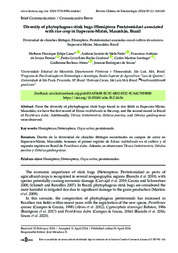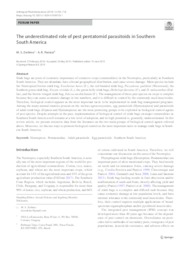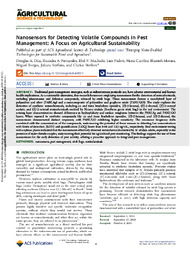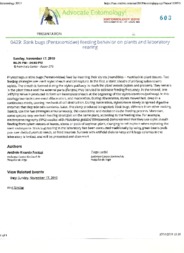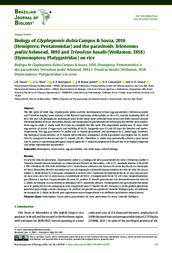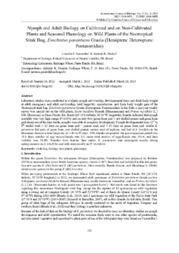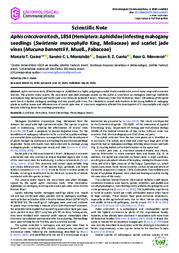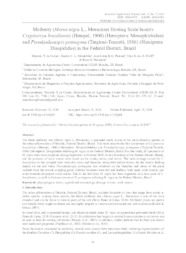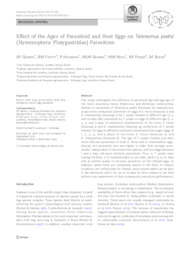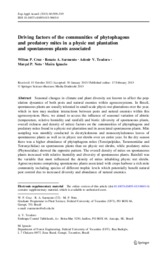Busca de Publicações
Filtrar por:
| Autoria: LIMA, M. H. F.; MELO NETO, A. J. de; PEREIRA, F. A. de S.; CARDOSO, P. L. E. R.; SANTIAGO, C. M.; ABREU, G. B.; SOUZA, J. R. de From the diversity of phytophagous stink bugs found in rice fields in Itapecuru-Mirim, Maranhão, we have the first record of Edessa meditabunda in the crop, and the second record in Brazil of Paratibr... ... |
| Autoria: ZERBINO, M. S.; PANIZZI, A. R. Stink bugs are pests of economic importance of extensive crops (commodities) in the Neotropics, particularly in Southern South America. They are abundant, have a broad geographical distribution, and c... ... |
| Autoria: DIAS, D. A.; FERNANDES, I. A.; MACHADO, E. P.; PEDOTT, L.; MORAES, M. C. B.; BORGES, M.; STEFFENS, J.; STEFFENS, C. Traditional pest management strategies, such as indiscriminate pesticide use, have adverse environmental and human health implications. As a sustainable alternative, this research focuses on employing... ... |
| Autoria: PANIZZI, A. R.; LUCINI, T. Phytophagous stink bugs (penatomidae) feed by inserting their sylets (mandibles + maxilae) in plan issues. |
| Autoria: SOUZA, J. R.; SILVA, C. G.; BARRIGOSSI, J. A. F.; MATOS JUNIOR, J. B.; CONCEIÇÃO, D. P.; SOUSA, G. O. he life cycle of stink bug, Glyphepomis dubia and the development of two egg parasitoids (Telenomus podisi and Trissolcus basalis) were studied at the Federal University of Maranhão, at 26 ± 2oC, rela... ... |
| |
| Autoria: CASTRO, M. T.; MONTAVÃO, S. C. L.; CUNHA, S. B. Z.; MONNERAT, R. G.
|
| Autoria: CASTRO, M. T. de; MONTALVÃO, S. C. L.; PERONTI, A. L. B. G.; WOLFF, V. R. dos S.; MONNERAT, R. G.
|
| Autoria: QUEIROZ, ANA PAULA; FAVETTI, B. M.; HAYASHIDA, R.; GRANDE, M. L. M; NEIVA, M. M.; PANIZZI, A. R.; BUENO, A. de F. This study investigates the influence of parasitoid age and egg age of the hosts Euschistus heros (Fabricius) and Dichelops melacanthus (Dallas) on parasitism of Telenomus podisi Ashmead. Six separate... ... |
| Autoria: CRUZ, W. P.; SARMENTO, R. A.; TEODORO, A. V.; NETO, M. P.; IGNACIO, M.
|
Observações
1 - Por padrão são exibidas publicações dos últimos 20 anos. Para encontrar publicações mais antigas, configure o filtro ano de publicação, colocando o ano a partir do qual você deseja encontrar publicações. O filtro está na coluna da esquerda na busca acima.
2 - Para ler algumas publicações da Embrapa (apenas as que estão em formato ePub), é necessário ter, no celular ou computador, um desses softwares gratuitos. Sistemas Android: Google Play Livros; IOS: iBooks; Windows e Linux: software Calibre.
Acesse outras publicações
Acesse a Base de Dados da Pesquisa Agropecuária (BDPA) para consultar o acervo completo das bibliotecas da Embrapa.

